Introduction to User-Friendly Website Design and Its Importance
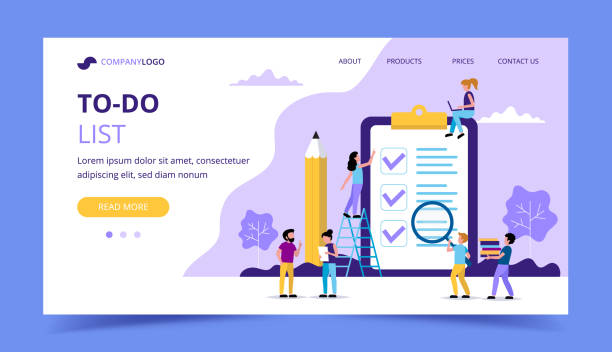
In today’s fast-paced world, where online competition becomes more intense every day, merely having a website is no longer enough.
What truly makes a difference goes beyond mere appearance: user-friendly website design.
This concept is at the heart of the success of any business or project in the digital space.
But what exactly does user-friendly website design mean, and why is it so vital? Is it simply about a site being beautiful, or are there deeper dimensions often overlooked? #user_friendly_website_design means creating an experience where users can easily and with complete satisfaction interact with your site, achieve their goals, and enjoy their presence on your site.
This includes everything from simple navigation and easy access to information to loading speed and compatibility with various devices.
The ultimate goal is to reduce #friction and increase #user_engagement.
When a user lands on your website, the first moments are decisive.
If the site is confusing, slow, or disorganized, you are likely to lose the user.
A site with an excellent user interface helps users quickly find what they are looking for and achieve their goals, whether it’s buying a product, finding information, or making contact.
This approach not only improves the customer experience but also directly impacts conversion rates, customer loyalty, and ultimately, your business’s profitability.
In the rest of this educational and explanatory article, we will examine the details and various aspects of user-friendly website design to guide you on the path to optimizing the user experience.
Are you tired of your company’s website not meeting your expectations? With RasaWeb, design a professional website that truly represents your business.
✅ Increase new customer acquisition and sales leads
✅ Enhance your brand’s credibility and trust among your audience
⚡ Get a free website design consultation!
Key Principles of User Experience in Web Design

To achieve user-friendly website design, understanding and applying User Experience (UX) principles are essential.
UX principles go beyond mere aesthetics and focus on usability, efficiency, and user satisfaction.
One of the most important of these principles is Navigation.
A site must have a logical and predictable menu and navigation structure that allows users to easily move from one point to another.
Using well-known design patterns and clear signposting prevents users from getting lost.
Another principle is Accessibility.
A user-centric site must be accessible to everyone, including people with disabilities.
This includes using alternative text for images, appropriate color contrast, and support for screen reader navigation.
Consistency is also a critical factor; design elements, text style, and interactions must be uniform across the site so that users feel familiar and in control.
When elements consistently behave the same way, users learn how to interact with the site more quickly.
Feedback means providing clear information to users about their actions and the system’s status; for example, when a form is submitted, a message indicating success or failure of the operation should be displayed.
Finally, Efficiency means that users can accomplish their tasks in the shortest time and with the least effort.
Reducing unnecessary steps and simplifying processes leads to improved user experience and satisfaction.
These principles, together, provide a specialized framework for designing a website that not only looks beautiful but is also practically effective and useful.
Visual and Graphic Elements in User-Friendly Website Design
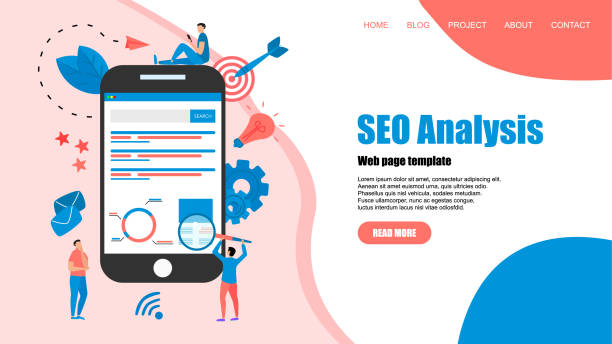
Visual and graphic elements are the backbone of any user-friendly website design.
These elements not only shape the aesthetics of the site but also play a vital role in guiding users, creating visual hierarchy, and conveying messages.
Layout Design is the first step; the layout should be logical and predictable, so users know where to look for information.
Proper use of Whitespace is crucial to prevent clutter and improve readability.
Color Palette selection is also very important.
Colors not only evoke emotions but can also draw users’ attention to important elements and strengthen brand identity.
Choosing appropriate colors with sufficient contrast for text and background is essential, especially for accessibility.
Typography, or the selection of font and text style, directly affects readability and visual experience.
Using readable fonts, appropriate sizes, and line spacing encourages users to read your content.
Finally, Imagery and Videos should be high-quality, relevant to the content, and optimized for fast loading.
Using appropriate graphics can simplify complex information and add more visual appeal to the site.
All these elements must be coordinated to create a cohesive and pleasant visual experience for the user.
This explanatory and guiding approach helps you pay more attention to the visual details of your website and consequently design a site with an excellent user interface.
| Visual Element | Impact on UX | Key Considerations |
|---|---|---|
| Layout | Guiding user’s gaze, improved readability | Use of whitespace, organized grid system |
| Color | Evoking emotions, brand identity | Sufficient contrast, meaningful use of colors |
| Typography | Readability, drawing attention to text | Choosing readable fonts, appropriate text size |
| Images/Videos | Visual appeal, quick information transfer | High quality, optimized size, relevance |
The Importance of Site Speed and Performance in Attracting Users
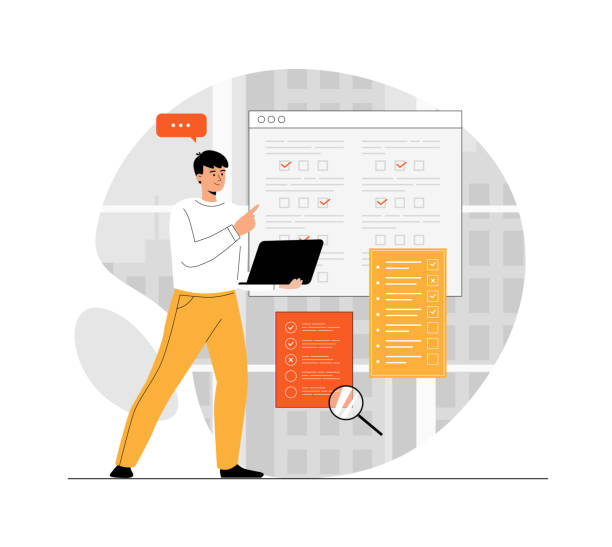
In the current digital age, site loading speed is one of the most important factors in user-friendly website design and retaining users.
Numerous studies have shown that every second of delay in page loading can lead to a significant decrease in conversion rates and an increase in bounce rate.
Today’s users are impatient and expect web pages to load instantly.
If your site is slow, users will leave it without hesitation and turn to your competitors.
This is a news and analytical truth whose neglect incurs heavy costs.
Furthermore, site speed directly impacts your ranking in search engines.
Google and other search engines prioritize faster sites because they know these sites offer a better user experience.
To optimize site speed, several key actions are available: optimizing images for smaller size without loss of quality, using browser caching to store static site elements, compressing CSS and JavaScript files, and using a Content Delivery Network (CDN) to deliver content from the closest server to the user.
Also, choosing quality hosting and optimizing site coding by removing unnecessary code and reducing HTTP requests are of high importance.
An optimally performing site not only increases user satisfaction but also helps you rank higher in search results and attract more traffic.
This is an integral part of a comprehensive user-friendly website design strategy.
Does your company’s website create a professional and lasting first impression in the minds of potential customers? RasaWeb, with professional corporate website design, not only represents your brand’s credibility but also paves a path for your business growth.
✅ Create a powerful and trustworthy brand image
✅ Attract target customers and increase sales
⚡ Get a free consultation
Responsiveness and Compatibility with Various Devices

With the increasing use of smartphones and tablets for internet access, Responsiveness has become one of the most critical features of any user-friendly website design.
Responsive Web Design (RWD) means designing a site that automatically adjusts its layout and elements to the screen size of the user’s device.
This means that regardless of whether the user is on a desktop computer, laptop, tablet, or smartphone, your site will always provide the best visual and functional experience.
This is a specialized and guiding principle that cannot be overlooked.
The benefits of RWD go beyond aesthetics; firstly, it ensures a unified user experience and avoids the need to build separate versions for each device, which is more cost-effective in terms of both expense and maintenance.
Secondly, search engines like Google prefer responsive sites and give them more importance in ranking.
This means that a responsive site has a better chance of being seen in search results.
To effectively implement RWD, techniques such as Fluid Grids, Flexible Images, and Media Queries in CSS should be used.
Also, the “Mobile-First” approach means starting the design for the smallest screens first and then expanding to larger screens, which helps focus on essential elements and functionality.
This approach ensures that every user, regardless of the device they use, will have a smooth and satisfactory experience on your site.
User-Centric Content and Its Role in Engagement
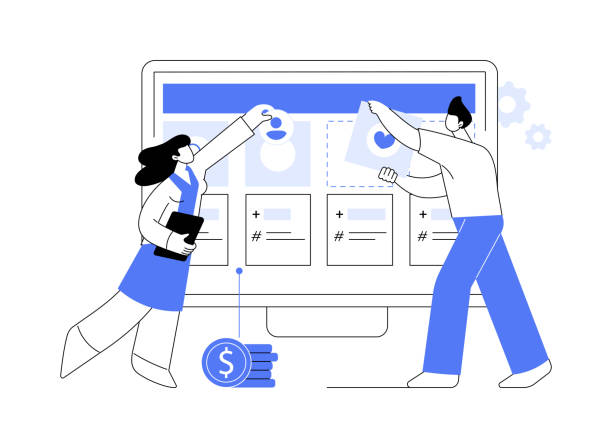
Alongside technical and visual aspects, content is the beating heart of any user-friendly website design.
User-centric content means providing information that is not only accurate and relevant but also organized and presented in a way that is understandable, useful, and engaging for your target audience.
This educational and explanatory approach is based on the principle that users visit your site to find solutions, not just to see beautiful design.
Readability is the first important factor.
Text should be easily scannable and readable with appropriate font and size, short paragraphs, and the use of headings and subheadings.
Complex sentences and specialized jargon should be minimized, unless your audience is an expert.
Relevance is also vital; content must directly address users’ needs and questions.
Each page should have a clear goal, and its content should be optimized to achieve that goal.
Clear and compelling Calls to Action (CTAs) guide users to the next steps, whether it’s purchasing a product, subscribing to a newsletter, or downloading a file.
Storytelling and using real-world examples can make your content entertaining and memorable.
Also, keeping content up-to-date and ensuring the accuracy of information increases your site’s credibility.
Ultimately, user-centric content not only contributes to improving the user experience but also plays a significant role in content marketing and attracting organic traffic.
A site with strong content engages users more and increases their time on the site, which is beneficial for both SEO and your business goals.
SEO and User-Friendly Website Design Hand in Hand

Perhaps at first glance, Search Engine Optimization (SEO) and user-friendly website design might seem like two separate domains, but in reality, these two concepts are deeply intertwined.
A user-friendly website design naturally meets many of the factors required for SEO and helps improve your site’s ranking in search results.
Google and other search engines are increasingly emphasizing user experience factors such as site speed, mobile compatibility, and low bounce rate.
If your site is slow, users will leave it (high bounce rate), and this is a negative signal for search engines.
Conversely, a site with an excellent user interface that loads quickly and has easy navigation engages users more, increases their time on the site, and reduces the bounce rate.
These are all positive signals for search engines.
From specialized and analytical perspectives, site structure also matters.
A logical and hierarchical structure not only helps users easily find information but also helps search engine crawlers better understand and index your content.
Using meaningful URLs, compelling Title Tags, and Meta Descriptions is beneficial for both users and search engines.
Therefore, when you focus on optimizing the user experience, you are effectively also improving your site’s SEO.
This synergy is one of the most powerful strategies for online success.
| UX Element | Impact on SEO | Key Optimization Tips |
|---|---|---|
| Loading Speed | Direct ranking factor, bounce rate reduction | Image optimization, caching, code compression |
| Responsiveness | Mobile ranking, high accessibility | Mobile-First design, use of media queries |
| Easy Navigation | Improved crawling, increased user dwell time | Clear menus, logical internal linking |
| High-Quality Content | Increased engagement signals, backlink attraction | Keyword research, readable and useful text |
User Feedback and Continuous Design Improvement
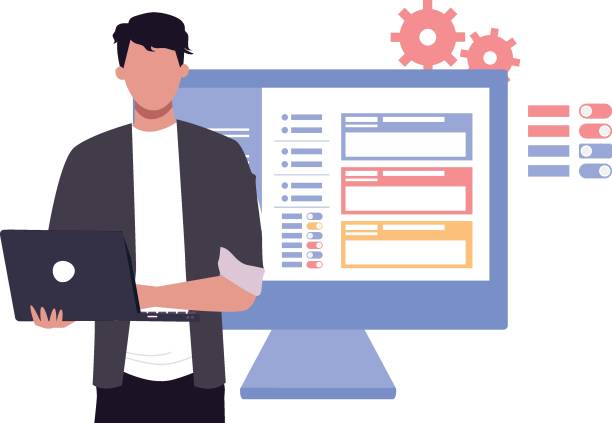
No user-friendly website design is perfect in its first version.
The process of optimizing the user experience is a continuous analytical guide that requires actively listening to users and responding to their needs.
Collecting and analyzing user feedback is the cornerstone of this continuous improvement process.
There are various methods for gathering feedback: surveys and feedback forms on the site allow you to directly ask users about their experiences.
Heatmaps and Session Recordings are powerful visual tools that show how users interact with your pages, where they click, how much they scroll, and where they encounter difficulties.
Usability Testing, which can be remote or in-person, allows you to observe real users performing specific tasks on your site and discover navigation or design problems.
Also, Web Analytics Tools like Google Analytics provide valuable quantitative data such as bounce rate, time on site, user paths, and conversion rates, which can highlight your design’s strengths and weaknesses.
After collecting this data, the next step is A/B Testing.
In this method, two different versions of a page or design element (A and B) are shown to different groups of users to determine which version performs better.
This process is an iterative cycle of design, testing, feedback collection, and improvement, ensuring that your site is always evolving and providing the best possible experience for users.
Are you concerned about your e-commerce site’s low conversion rate and not achieving your desired sales?
RasaWeb is your specialized solution for a successful e-commerce site.
✅ Significant increase in conversion rates and sales
✅ Professional and user-friendly design to attract customer satisfaction
⚡ Ready for a transformation in online sales? Get a free consultation!
Future Trends in User-Friendly Website Design

The world of user-friendly website design never stands still and is constantly evolving.
Understanding future trends is vital for anyone who wants to have an excellent user interface site.
This news and entertaining section gives you ideas for the future.
One of the most prominent current and future trends is Artificial Intelligence (AI) in UX.
AI can make sites smarter by personalizing content and user experience based on each user’s behavior and preferences.
AI-powered chatbots are also rapidly improving customer support and answering frequently asked questions.
Voice User Interface (VUI) is also growing, especially with the increasing popularity of voice assistants like Siri and Alexa.
Website design should allow information to be easily accessible and understandable through voice commands.
Micro-interactions – small, subtle animations that respond to user actions, such as a button changing color on click or an appealing loading animation – are increasingly being used to add character to the site and improve visual feedback.
Data-driven and Personalized Design also means using user data to provide unique experiences to each individual, which can range from suggesting relevant products to changing page layouts.
Furthermore, Inclusive Design, which goes beyond accessibility and aims to create experiences for a wider range of users with diverse needs and abilities, has gained increasing importance.
By considering these trends, one can ensure that your user-friendly website design is not only effective now but will also be ready for the future.
Strategic Conclusion for Successful Design
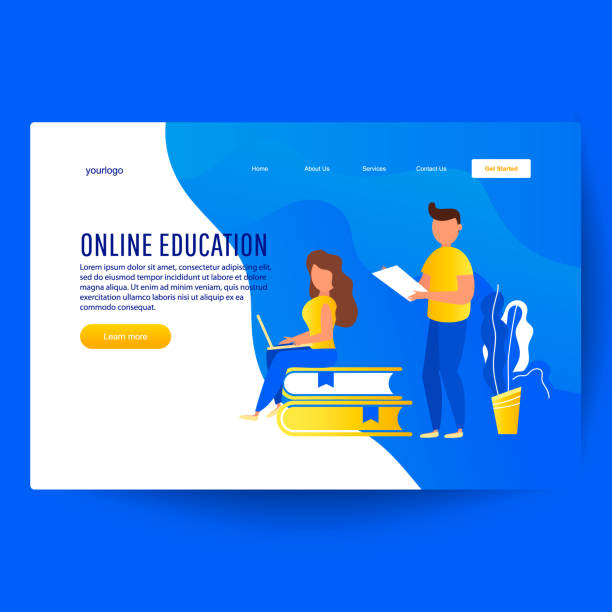
Ultimately, the path we take to achieve user-friendly website design is a continuous journey of learning, implementation, and optimization.
As we saw in this explanatory and guiding article, online success today is no longer limited to merely having a digital presence; rather, it depends on the quality of that presence and the experience you create for users.
From the importance of loading speed and mobile compatibility to the vital role of user-centric content and the unbreakable link with SEO, every element in user-friendly website design acts like pieces of a puzzle that, together, complete the picture of a successful website.
Remember that users are the central focus of every design decision.
Listening to their feedback, analyzing their behaviors, and applying this information in continuous improvements are the keys to longevity and growth in the digital space.
Investing in user experience optimization not only increases customer satisfaction and brand loyalty but also directly impacts your conversion rates and revenues.
In an era where user attention is a valuable commodity, a site with an excellent user interface not only attracts users but also retains them and converts them into loyal customers.
Therefore, by focusing on these principles and keeping pace with the latest trends, you can build a website that not only fulfills your business goals but also creates an unforgettable and positive experience for every visitor.
This approach is what makes the difference between an ordinary website and a truly successful digital platform.
Frequently Asked Questions
And other services by RasaWeb Advertising Agency in the field of advertising
Smart Website Development: A combination of creativity and technology to increase click-through rates through Google Ads management.
Smart Conversion Rate Optimization: A novel service to enhance customer behavior analysis through SEO-driven content strategy.
Smart Sales Automation: A blend of creativity and technology for user engagement through Google Ads management.
Smart SEO: A dedicated service for growth in SEO ranking based on intelligent data analysis.
Smart UI/UX: Designed for businesses aiming to increase click-through rates through user experience customization.
And over hundreds of other services in internet advertising, advertising consultation, and organizational solutions
Internet Advertising | Advertising Strategy | Advertorials
Resources
Digital Marketing Success TipsComprehensive Web Design GuideUser-Friendly Design Principles on the WebDigital Strategy for Businesses
? RasaWeb Afarin Digital Marketing Agency, your strategic partner for lasting brilliance in the online space. By offering innovative solutions, including multilingual website design, we help your business transcend boundaries and shine in global markets.
📍 Tehran, Mirdamad Street, Next to Central Bank, Southern Kazeroun Alley, Ramin Alley, No. 6
